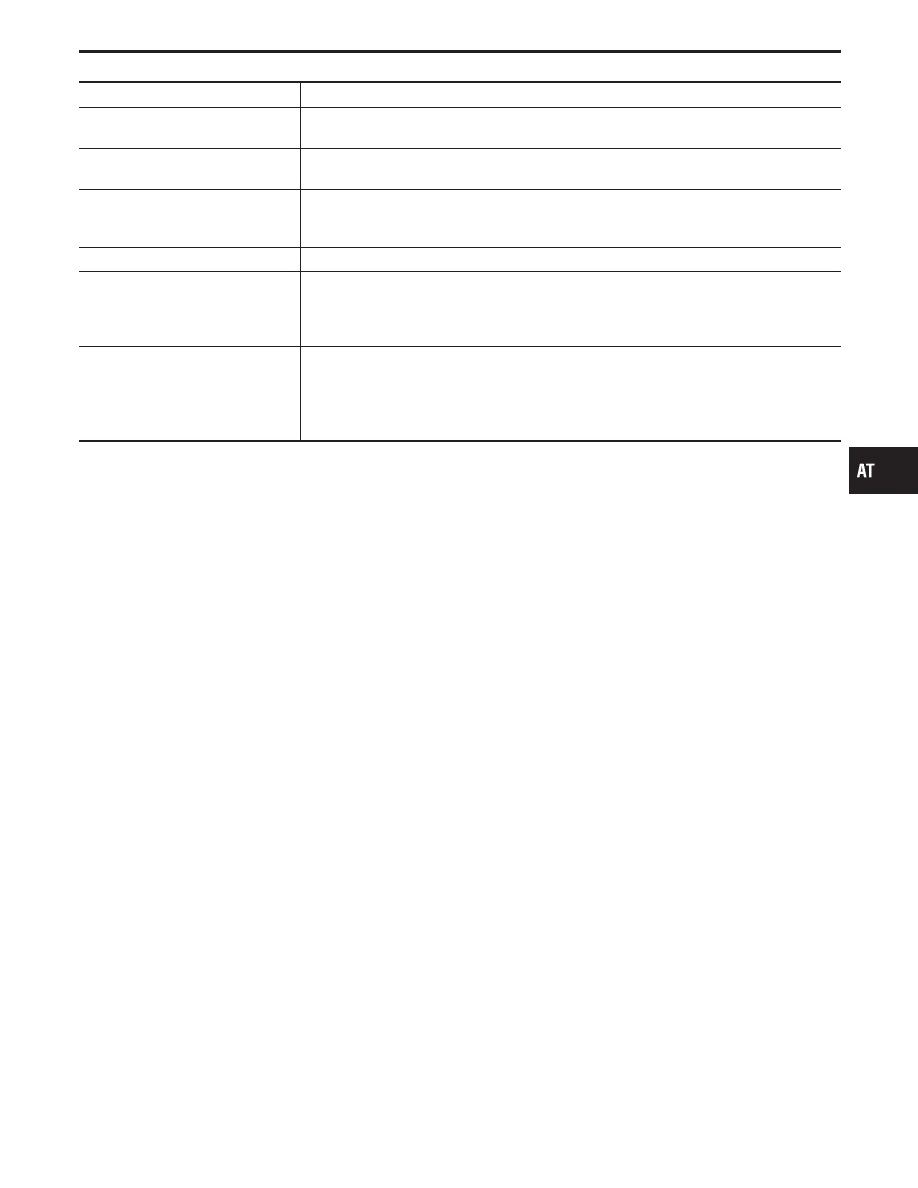Infiniti Q45 (FY33). Manual - part 10

Valve name
Function
3-2 timing valve
Prevents a late operation of the brake band when shifting selector lever from “D” to “1” or “2”
position while driving in D
3
.
“1” reducing valve
Reduces low & reverse brake pressure to dampen engine-brake shock when downshifting
from the “1” position 1
2
to 1
1
.
Overrun clutch reducing valve
Reduces oil pressure directed to the overrun clutch and prevents engine-brake shock.
In “1” and “2” positions, line pressure acts on the overrun clutch reducing valve to increase
the pressure-regulating point, with resultant engine brake capability.
Torque converter relief valve
Prevents an excessive rise in torque converter pressure.
Torque converter clutch control valve
Torque converter clutch control plug
Torque converter clutch control
sleeve
Activate or inactivate the lock-up function.
Also provide smooth lock-up through transient application and release of the lock-up system.
Shuttle shift valve D
Switches hydraulic circuits so that output pressure of the torque converter clutch solenoid
valve acts on the lock-up valve in the “D” position of D
2
, D
3
and D
4
. (“1” or “R” position,
lock-up is inhibited.)
Lock-up control is not affected in “D” position D
2
, D
3
or D
4
, unless output pressure of the
torque converter clutch solenoid valve is generated by a signal from the TCM.
GI
MA
EM
LC
EC
FE
PD
FA
RA
BR
ST
RS
BT
HA
EL
IDX
OVERALL SYSTEM
Control Valve (Cont’d)
AT-37